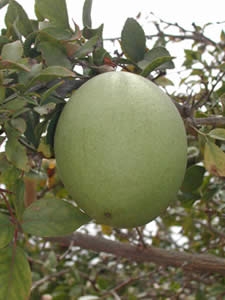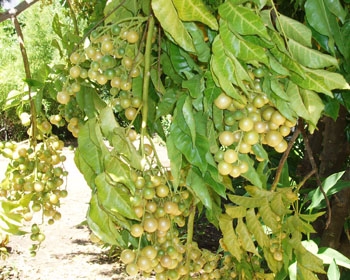|
|||||||||
Select any of 50 available languages! |
|||||||||
Distant citrus relatives
Distant citrus relatives Ceylon Atalantia (Atalantia ceylanica) Cochin China Atalantia (Atalantia citroides) Bael fruit (Aegle marmelos) Uganda powder-flask fruit (Balsamocitrus daweii) Wampee
(Clausena lansium)
Clymenia (Clymenia polyandra) Orangeberry (Glycosmis pentaphylla) Curry leaf (Murraya koenigii) Mock orange (Murraya paniculata) Boxthorn (Severinia buxifolia) Limeberry (Triphasia trifoliata) White Sapote (Casimiroa edulis) |
|
| Mock orange © Forest & Kim Starr |
  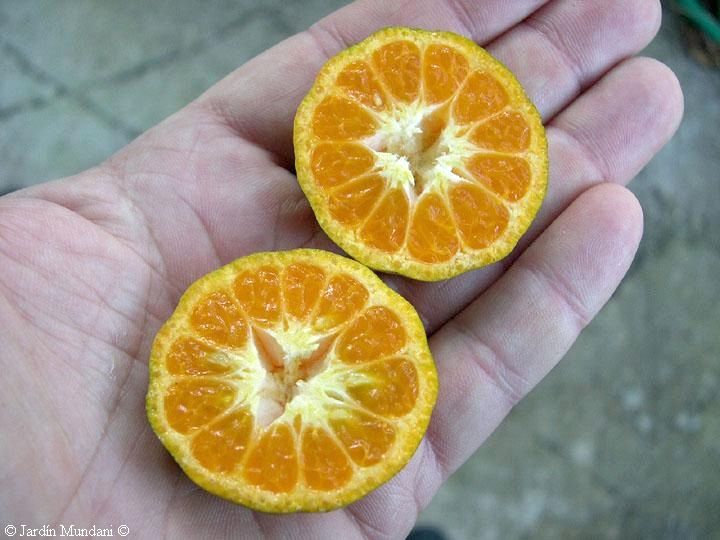   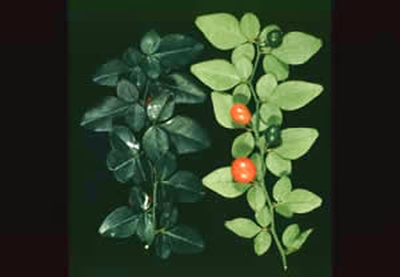 |
The citrus subfamily Aurantioideae (in
the family Rutaceae)
consists of several
tribes. The tribes have subtribes, which in turn have genera and
species. Most familiar are the six closely related genera in
the main subtribe The
True Citrus Fruit Trees:
Fortunella (Kumquats),
Eremocitrus (Australian desert lime), Poncirus (Trifoliate orange), Clymenia (Clymenia), Microcitrus (Australian and New Guinean wild limes) and Citrus (See Introduction, The Genus Citrus) There are several other related genera, which belong to the citrus subfamily: Severinia (Boxthorn) and
Atalantia (Ceylon Atalantia and Cochin China Atalantia) belong to The Citrus Fruit Trees subtribe, whereas Triphasia (Limeberry) belongs to The Minor Citroid Fruit Trees. Glycosmis (Orangeberry), Clausena (Wampee) and Murraya (Curry leaf and Mock orange) having very simple, more or less primitive flower and fruit structures belong to The Remote Citroid Fruit Trees subtribe. Aegle (Bael fruit) and Balsamocitrus (Uganda Powder-flask fruit) belong to The Hard-Shelled Citroid Fruit Trees. See also The citrus subfamily table. |
| LAT | Atalantia citroides Pierre ex Guill. | 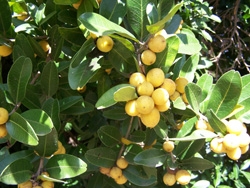  |
| Syn | ||
The Cochin China Atalantia grows to be a medium-sized tree, 5 to 10 m high, and is probably larger and more vigorous than any other species of the subgenus Atalantia. The tree has 5 mm long spines, the leaves are ovate 5-9 X 2-4 cm. Flowers have four ovate petals. The fruit resemble small oranges about 20 mm in diameter, with a rough peel and the flesh formed of succulent pulp-vesicles. The seeds are ellipsoid, about 10 mm long. |
||
| ENG | Cochin
China Atalantia |
|
| FRA | ||
| Photos | © UC-Riverside
Citrus Collection © Jardín Mundani |
|
| Link | Mundani Botanical Garden | |
| LAT | Severinia buxifolia (Poir.)Ten. |   |
| Syn | Atalantia buxifolia (Poir.)Oliv. Citrus buxifolia Poir. Limonia bilocularis Roxb. Sclerostylis atalantioides Wight & Arn. |
|
Boxthorn, a dense, low-branching, compact evergreen shrub has small, oval, glossy, dark green leaves closely spaced on slender, thorny branches. Small, white, fragrant, orange-like blossoms in spring and summer are followed by shining black, seedy berries. Growth rate is very slow. Boxthorn works well as a sheared hedge, barrier, or foundation shrub. Only one pruning is needed each year once the plant has reached the desired height. Tolerant of most welldrained soils, Boxthorn needs regular watering until established. Although Boxthorn will grow in shade, it has more compact, dense growth in full sun. The plant is not widely available, perhaps due to its slow growth rate. The cultivars ‘Compacta’ and `Nana’ have dwarf growth habits. Cultivar: Chinese (China) |
||
| ENG | Boxthorn, Chinese Box orange | |
| FRA | Buis de Chine | |
| Photos | © Jardín Mundani | |
| Link | Mundani Botanical Garden | |

|
|
Page up-dated 20 November 2009
Back to top of page





